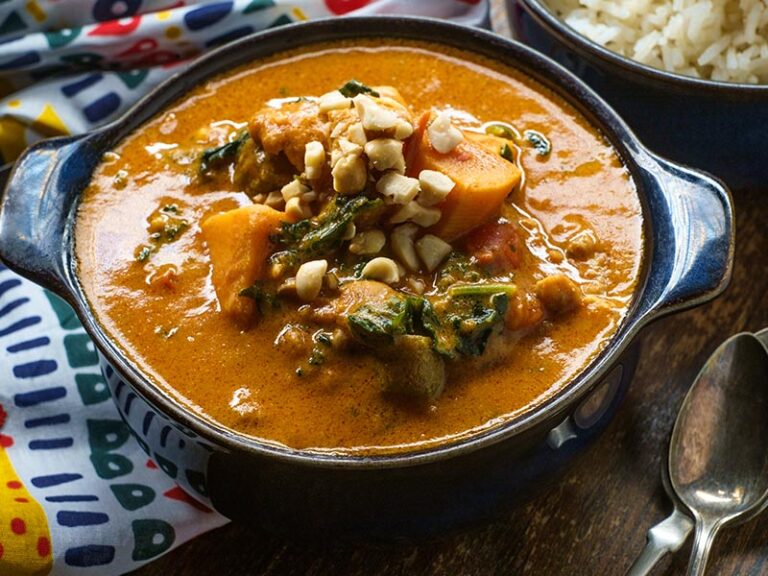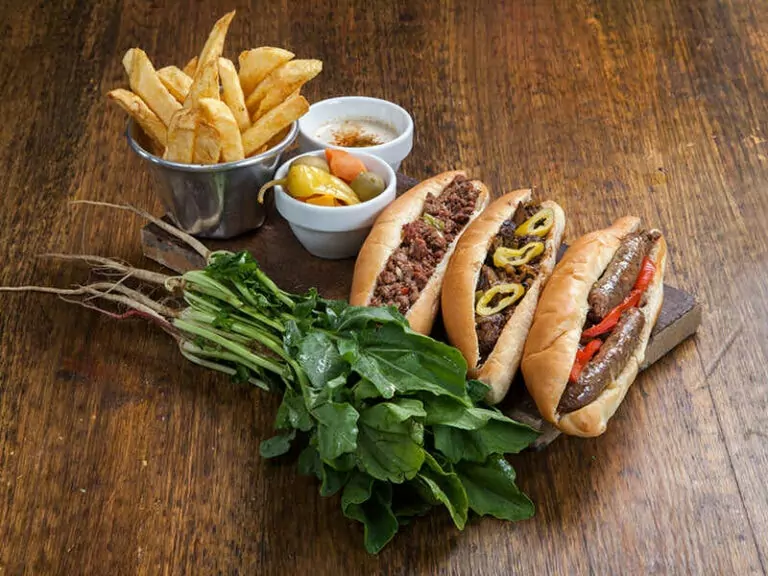African cuisine history is an epic saga that has stirred many souls. And what I write here is more than just some trivia facts. Firstly, you’ll learn about the geographic and cultural factors shaping this place.
Then, the deep insights into Africa’s pre-colonial, colonial, and post-colonial periods will illuminate how its dishes have evolved. Lastly, I’ll unravel specific regional cuisines and the vital role of African cuisine in health, nutrition, and global culinary culture.
This article is your ticket for a deeper look at the complex identity of the African culinary world. So, take advantage of this opportunity!
Key Takeaways
Overview Of African Cuisine
The story of African cuisine is steeped in rich history. This culinary tradition, defined by its diverse ingredients and distinctive techniques, echoes age-old customs. Let’s take a look at its definition and historical background.
Definition
African cuisine refers to the culinary traditions across the African continent. These traditions reflect the rich history, geography, culture, and agriculture of over 50 countries and hundreds of ethnic groups.
A wide range of ingredients, cooking methods, and dishes characterizes this cuisine. Among them are grains, tubers, vegetables, fruits, and proteins from animal and plant sources.
Brief History Background
African culinary history contains thousands of years of human civilization, migration, trade, and innovation. From the earliest hunter-gatherer societies to the advanced ancient civilizations of Egypt and Carthage, food has always played a vital role in Africa’s story.
Besides indigenous African cultures, various characteristics are affecting this history. The first is external influences from Asia and Europe. The transatlantic slave trade, colonial rule, and the effects of globalization in the post-colonial era also play an important role.
Geographic And Cultural Influence On African Cuisine
Africa, a land of stunning landscapes, carries a culinary tradition as diverse as its geography. Indigenous cultures have always had a profound impact on their gastronomic heritage. Then, external cultural influences further paint this picture of this gastronomic scene.
Diverse Geographic Landscape
The diverse geographic landscape greatly influences African cuisine. According to a study on National Geographic Society, while the north has the fertile Nile Delta H, the expansive savannahs are the trademark of the east and West.
And the central area is covered with tropical rainforests. Even better is the varied environments of southern Africa, including desert, bushveld, and coast.
These landscapes have shaped the diets of their inhabitants. For example, fish and seafood are common in coastal regions, while the diets of inland and arid regions rely more on grains, cattle, and wild game.
Impact Of Indigenous Cultures
The diverse cultures in Africa have significantly influenced the continent’s cuisine. Every ethnic group has unique culinary traditions, ingredients, and cooking methods.
For instance, the Maasai people in East Africa rely heavily on cattle for milk, meat, and blood. Meanwhile, the Yoruba people from the West have a rich culinary tradition, including soups and stews made with local ingredients like yam, okra, and melon seeds.
Influence Of External Cultures
African cuisine also has experienced several changes from external cultures. Arab traders and immigrants brought rice, spices, and citrus fruits, significantly influencing North and East African cuisines.
On the other hand, European colonizers introduced corn, cassava, and potatoes, which later became staple foods in many African countries. Indian immigrants, particularly in East Africa, introduced spices, bread, and other food practices, contributing to developing unique fusion cuisines.
Pre-Colonial African Cuisine
It’s time to return to pre-colonial Africa when traditional foods were king. The culinary scene was rich and diverse, from hunter-gatherer societies to early agriculture. Food preservation techniques and indigenous culinary practices added an extra depth of flavor.
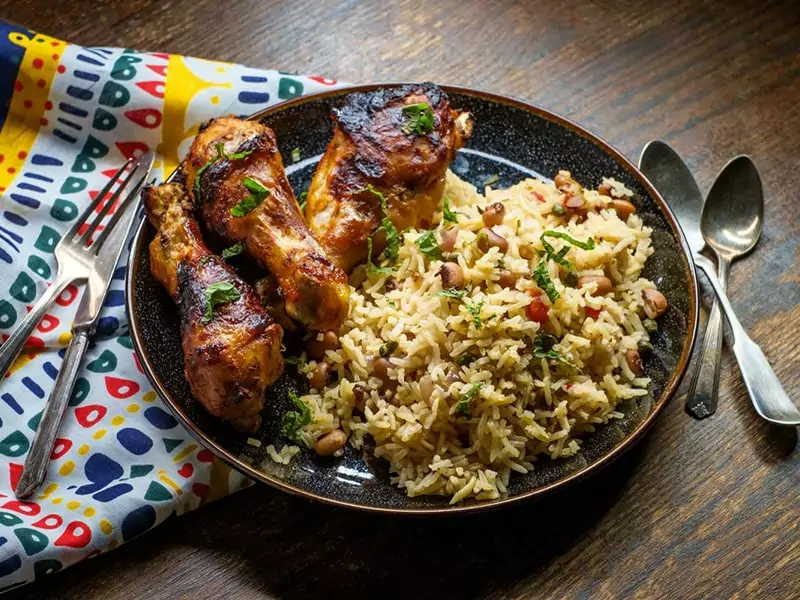
Overview Of Traditional Foods
Before colonial influence, the Africans mainly used local, naturally available ingredients. Traditional staples varied by region but generally included grains (millet and sorghum), tubers (yams and taro), and countless fruits, vegetables, and legumes.
Animal proteins often came from livestock, game, and fish, with different regions relying on different sources based on local availability. That leads to numerous regional staples, varying greatly by culture and region.
However, some common elements were available across the continent. They include grain porridges from millet or sorghum, stews and soups with local vegetables and meats, and fermented foods and drinks.
Hunting, Gathering, And Early Agriculture
Based on a study of John Beauclerk, a development practitioner, hunting and gathering practices were already available in Africa during early human societies. Over time, many communities transitioned to settled agriculture, cultivating crops like yams, millet, and sorghum.
Pastoral communities developed methods to sustainably raise and utilize livestock, whereas fishing communities along the coasts and riverbanks created unique seafood cuisines.
Traditional Culinary Practices And Food Preservation Methods
Traditional culinary practices were based on available resources and specific cultural traditions. Typical cooking methods in Africa were boiling, grilling, roasting, and steaming.
The locals also invented many food preservation methods, such as sun-drying, smoking, and fermenting. These practices were crucial for surviving in times of scarcity. They also led to diverse flavors and textures in African cuisine.
The Impact Of The Transatlantic Slave Trade
As dark as the transatlantic slave trade era was, its influence sparked a transformation in African cuisine, introducing many new ingredients. Simultaneously, this cuisine left its imprint on the gastronomic tapestry of the Americas.
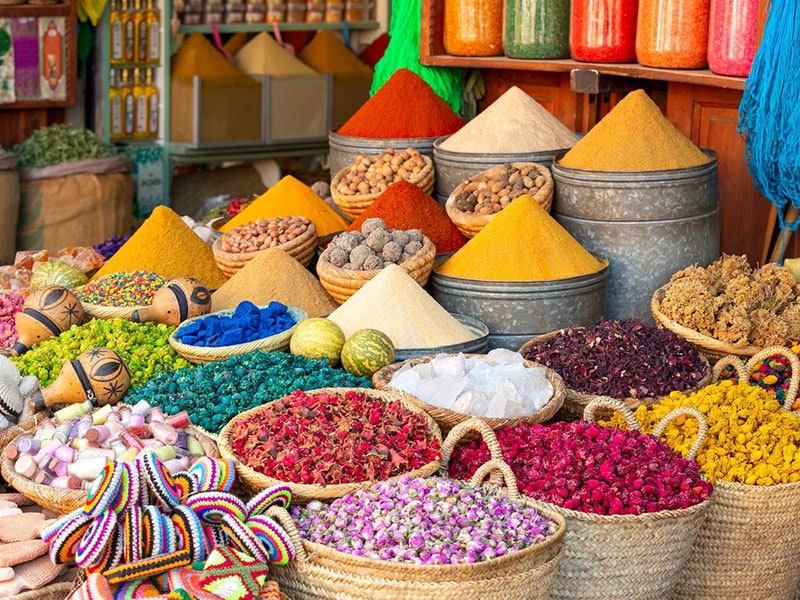
Foods Brought To Africa During The Slave Trade
The slave trade introduced new foods from the Americas to Africa, such as maize (corn), cassava, peanuts, tomatoes, hot peppers, and sweet potatoes.
Thanks to their adaptability to various climates, these foods became widely cultivated across Africa and significantly impacted its cuisine.
Influence Of African Cuisine On The Americas
Conversely, the slave trade also transported African cuisine to the Americas. Enslaved Africans brought their cooking traditions, influencing native cuisines, particularly in the Southern United States, Brazil, and the Caribbean.
Dishes like Jambalaya, Gumbo, and Feijoada carry this unmistakable influence. The cross-continental exchange of cooking ideas and techniques has enriched both African and American cuisines.
Colonial Impact On African Cuisine
The colonial era brought unanticipated culinary changes to Africa, with Europe and Asia significantly marking their presence. They blend their food influences into an African gastronomic palette.
European Influences
European colonial rule introduced new ingredients and cooking methods to Africa. The British, French, Portuguese, and other European countries brought foods such as bread, potatoes, and various types of meat.
They also introduced new cooking methods, including baking and frying. These new ingredients and methods were often incorporated into local cuisines, leading to unique fusion dishes.
Asian Influences
Colonial trade routes also facilitated the spread of Asian culinary influences. East Africa experienced a significant impact from India and Indonesia due to trade connections and migrant populations.
Spices like turmeric, cumin, and coriander became common in East African dishes, such as coconut and basmati rice. This resulted in unique culinary hybrids, such as the Swahili cuisine of Kenya and Tanzania, which blends African, Arab, and Indian cuisines.
Post-Colonial African Cuisine
The post-colonial era saw an evolution in African cuisine, stirred by newfound independence. From fusion cuisines and contemporary interpretations to globalization and migration, the culinary canvas of Africa transformed.
Changes And Developments After Independence
After achieving independence, many African nations remarkably changed and developed their cuisines. While some sought to revive traditional foods, others continued to evolve and adapt their cuisines in response to global influences.
The latter half of the 20th century saw a growth in urbanization, leading to diet changes and an increase in street food culture in many African cities.
Fusion Cuisines And Contemporary Interpretations
In the post-colonial era, many innovative chefs and home cooks began creating fusion cuisines. These dishes blended traditional African ingredients and techniques with other cuisines.
This method has resulted in a dynamic culinary scene, reflecting this continent’s deep history and modern realities. The rise of fine dining is another contemporary interpretation of traditional dishes, showcasing the diversity and complexity of African cuisine.
Influence Of Globalization And Migration
Globalization and migration have shaped modern African cuisine. As people from Africa migrated around the world, they took their traditions with them, developing African diaspora cuisines.
At the same time, the increasing global availability of foods and ingredients has brought new flavors to African tables. These global impacts keep changing the local cuisine, hence an evolving culinary tradition.
In-Depth Look At Regional Cuisines
From the spice markets of North Africa to the comfort foods of Southern Africa, every region narrates a unique culinary tale. A journey through West, East, and Central Africa adds various layers to this tale, showcasing many fascinating flavors.
West Africa
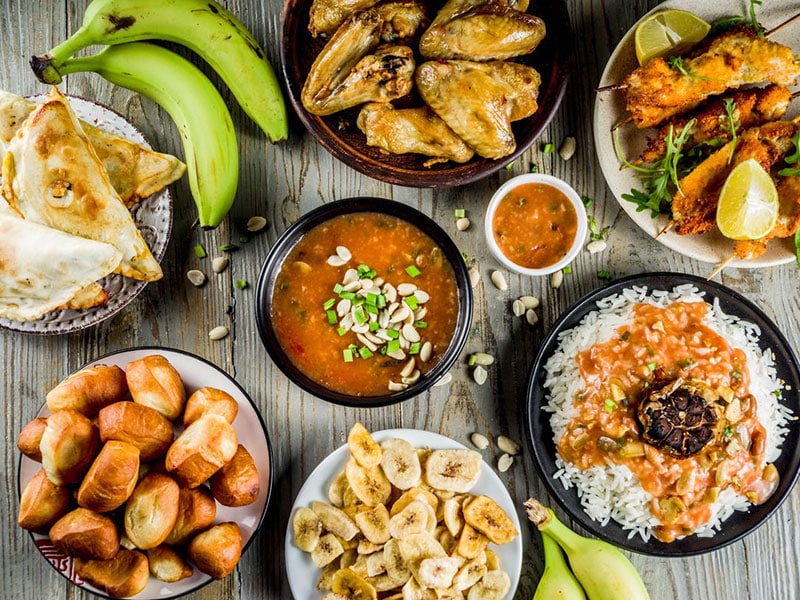
For a long time, West African cuisine was known for its dishes, often featuring a combination of heat from chili peppers and the umami richness of fermented ingredients. Staple foods include grains like millet and sorghum, tubers like yam, and legumes.
Notable dishes include Jollof rice (rice cooked in a tomato sauce) and Egusi soup (rich ground melon seed soup).
East Africa
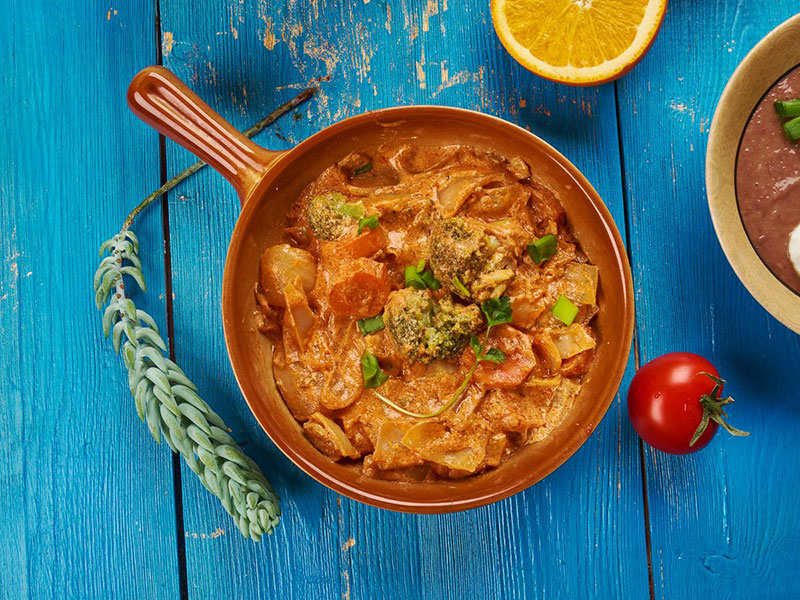
Dishes such as Ethiopian Injera (sourdough flatbread) and Kenyan Ugali (stiff cornmeal porridge) are the backbones of East African culinary scene. Staple ingredients include grains, lentils, and vegetables, often prepared as stews or served with bread or porridge.
This coastal region’s cuisine reflects Indian and Arab influences, often featuring coconut, rice, and various spices.
North Africa
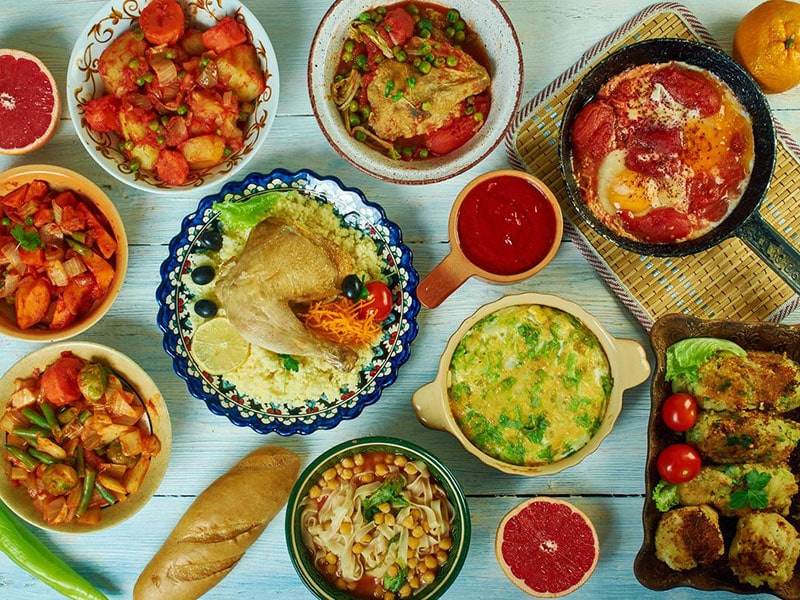
You may know North African cuisine is heavily affected by Arab, Berber, and Mediterranean cultures. Common ingredients include lamb, couscous, olives, and countless fruits and vegetables. Iconic dishes include Moroccan Tagine, Egyptian Ful Medames, and Tunisian Brik.
Southern Africa

Meat, maize, and root vegetables appear in numerous dishes in Southern Africa. Two notable examples are Bobotie (South African casserole) and Botswana Seswaa (stewed meat). Sadza (cornmeal porridge) is a staple in Zimbabwe, served with vegetables and meat or fish.
Central Africa
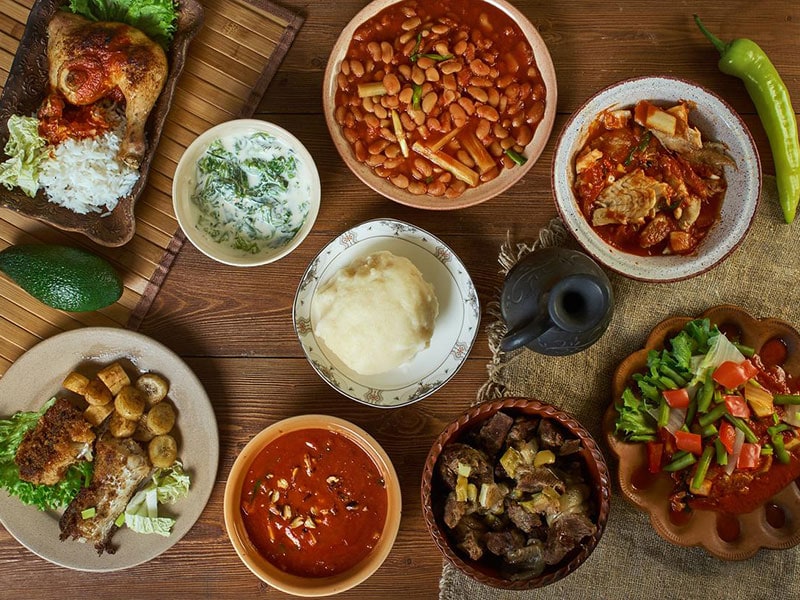
Plantains, cassava, peanuts, and leafy greens build up the Central African delicacies. Meat is often smoked or dried and added to dishes for flavor.
Examples of Central African dishes include Congolese Saka Saka (cassava leaf stew), Chadian Kisser (sourdough pancake), and Cameroonian Ndole (bitter leaf stew).
The Role Of African Cuisine In Health And Nutrition
In its bountiful wisdom, African cuisine unlocks a world of high nutritional value. Shifts in diets may pose challenges to public health. But this culinary heritage still holds immense potential for global health food markets.
Nutritional Value
Traditional African foods are rich in nutrients, providing a balanced diet if consumed in the right proportions. Grains and tubers provide carbohydrates, while legumes and meats give proteins.
On the other hand, fruits, vegetables, and fermented foods offer different vitamins, minerals, and beneficial probiotics. Many traditional dishes there are also high in fiber and low in saturated fat, contributing to overall health.
Impact Of Diet Shifts On Public Health
Still, in urban areas, their diets shift to more Western-style diets. This change involves more consumption of processed foods high in sugar, salt, and unhealthy fats, leading to a rise in non-communicable diseases like obesity, diabetes, and heart disease.
The Potential In the Global Health Food Market
Given their nutritional profiles, many African foods can significantly contribute to the global health food market. Foods like teff, millet, amaranth, and baobab fruit have already gained international recognition as “superfoods.”
By highlighting the nutritional benefits of these and other traditional African foods, they are likely to gain global popularity, supporting local African food systems.
African Cuisine In The Global Culinary Scene
African-inspired menus have started to thrive in global restaurants and food festivals. Credit goes to many prominent chefs and culinary influencers. Get ready to explore all exciting future trends and possibilities ahead.
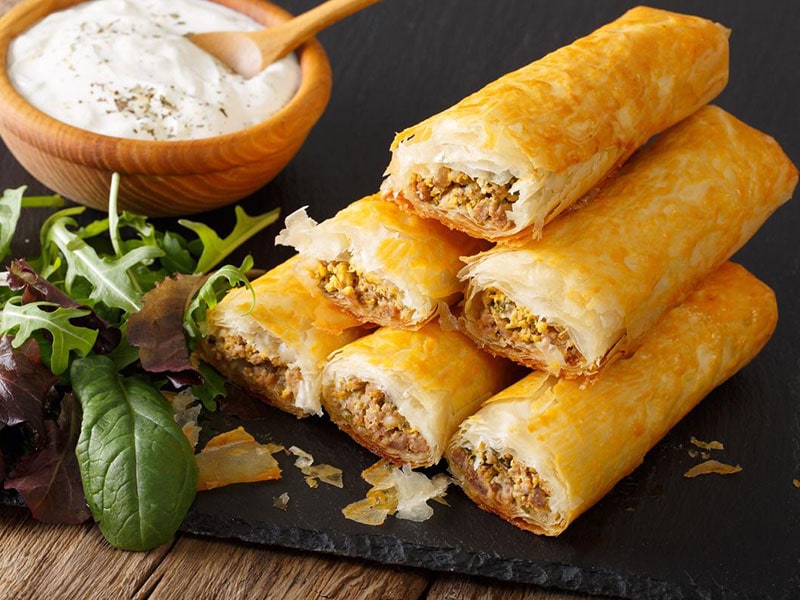
In Global Restaurants And Food Festivals
African cuisine has increasingly affected the global culinary scene. African restaurants have become more common in cities worldwide. Moreover, African food appears more at international food festivals, showcasing the cuisine to a broader audience.
Prominent Chefs And Culinary Influencers
African chefs are crucial in bringing African cuisine to the global stage. Chefs like Senegal’s Pierre Thiam, South Africa’s Siba Mtongana, and Ghana’s Selassie Atadika receive international acclaim for their innovative and contemporary dishes.
Through their work, these cooks redefined global perceptions of African food and contributed to its rising status in the international culinary world.
Future Trends And Possibilities
As the global culinary scene evolves, African cuisine has many opportunities to grow in influence and recognition. Culinary tourism helps travelers experience African food culture firsthand.
The growing global interest in sustainable and healthy food aligns with many aspects of traditional African cuisine. Looking ahead, African cuisine has a promising future in the global culinary scene.
FAQs
Taste Of Past Africa
With the turn of the last page in the intriguing narrative of African cuisine history, I hope you’re as captivated by its depth and diversity as I am. It’s not just a story about food but a testament to Africa’s resilience, adaptability, and rich cultural tapestry.
Please spread this flavorful knowledge, so go ahead and like and share this article. Remember to drop a comment below; your insights can deepen this collective understanding and appreciation for the gastronomic wonders of African history.



